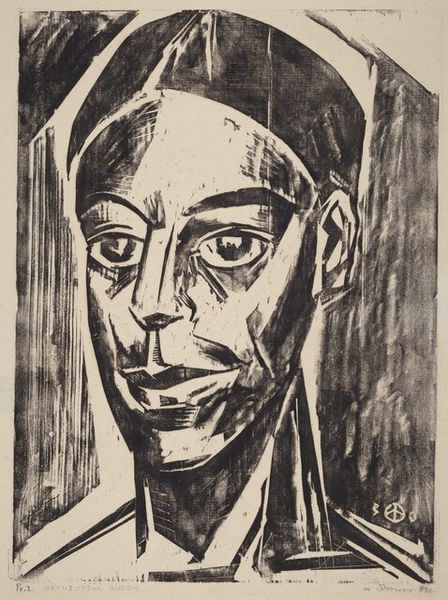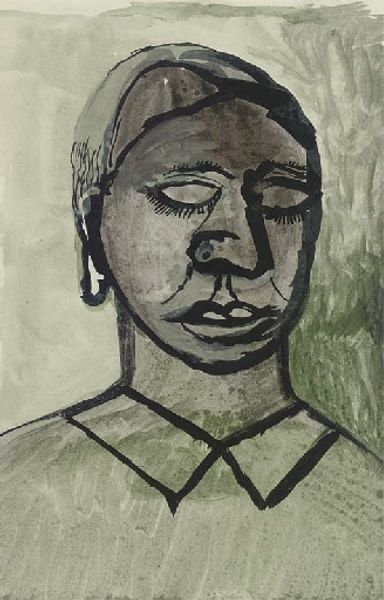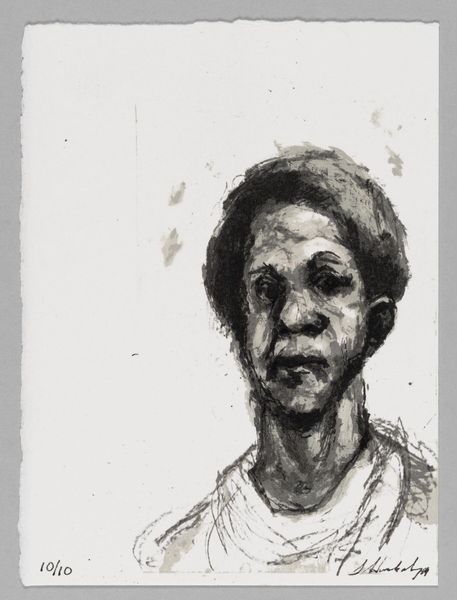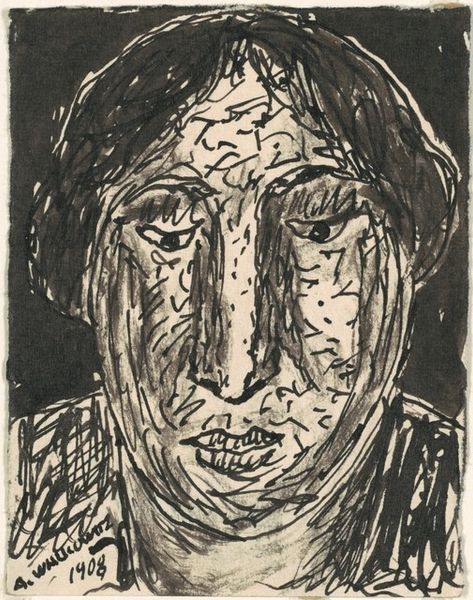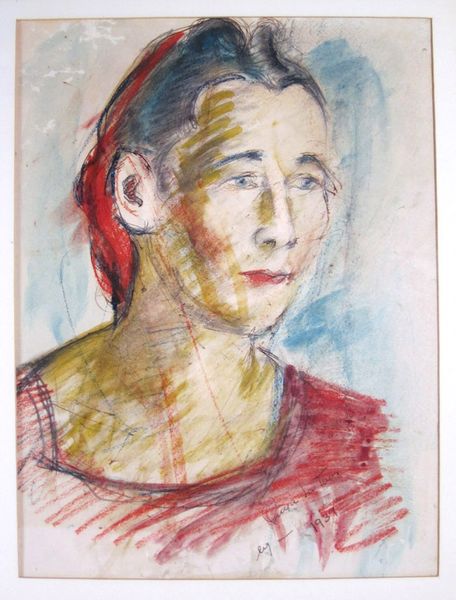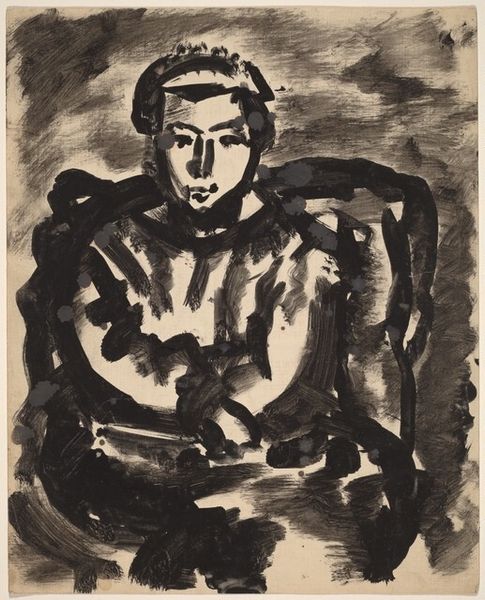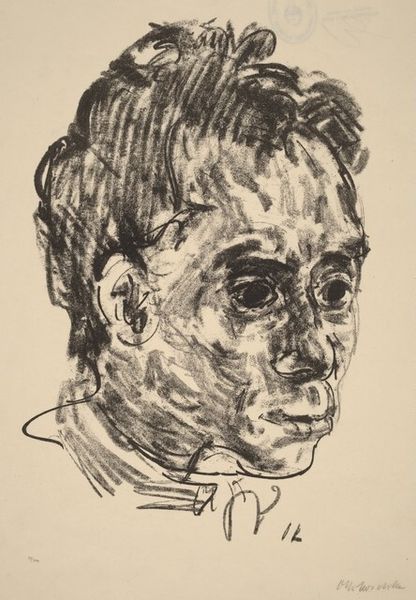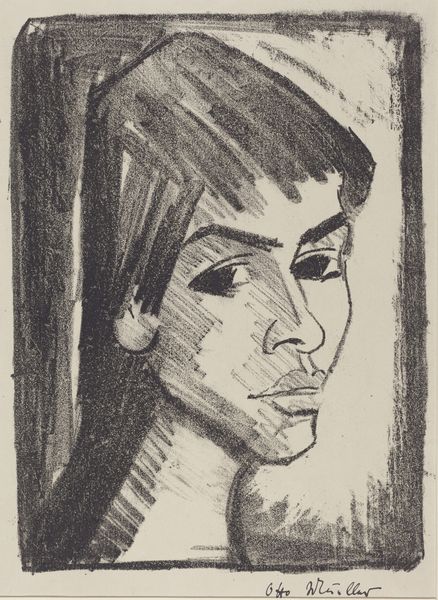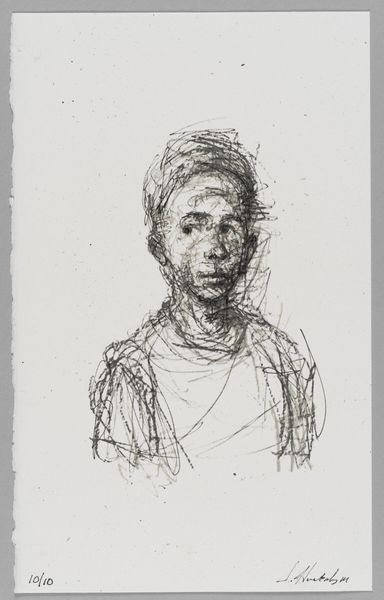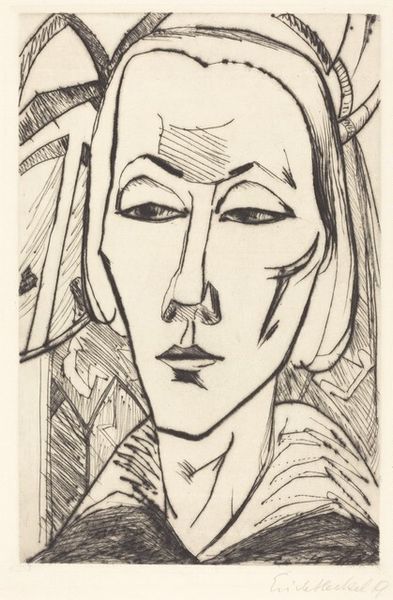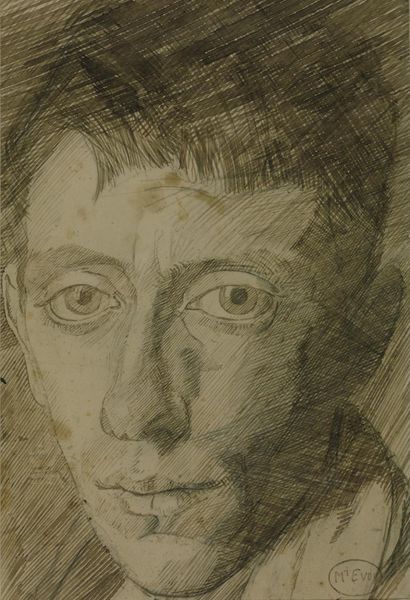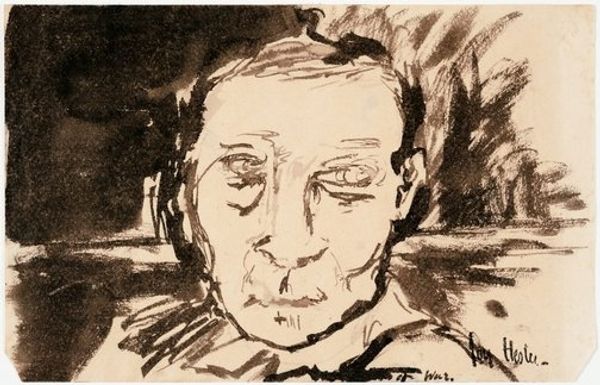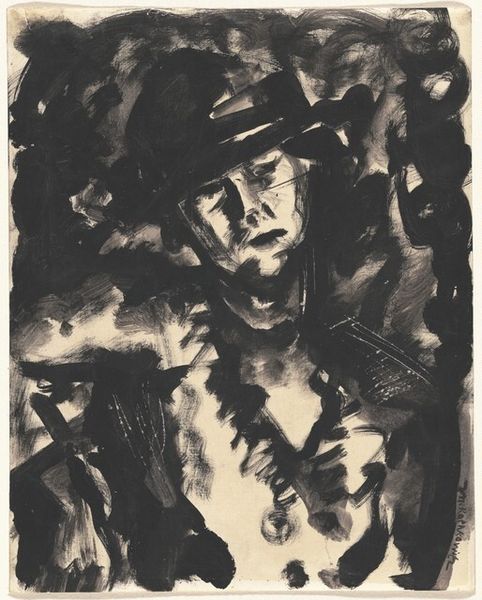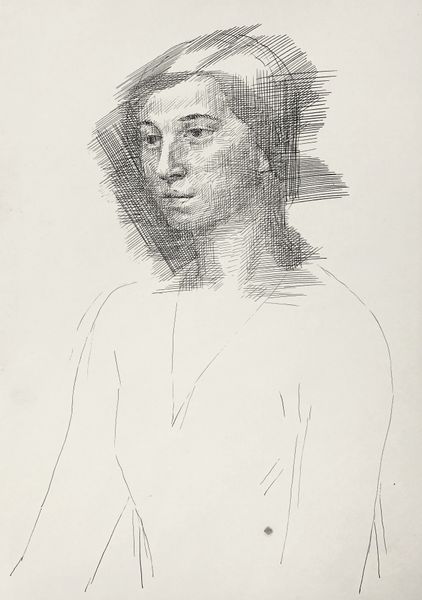
drawing, ink
#
drawing
#
self-portrait
#
caricature
#
ink
#
expressionism
#
portrait drawing
#
portrait art
Dimensions: 18 x 11 1/2in. (45.7 x 29.2cm)
Copyright: No Copyright - United States
Curator: Look at the weight in that ink wash. It feels like peering into someone’s subconscious. Editor: Exactly! It’s Béla Uitz's "Head of a Woman," rendered around 1917, and it really captures the anxious mood of Europe during the first World War. The work now resides here, at the Minneapolis Institute of Art. Curator: Uitz definitely channeled some intense emotions. There’s a profound solemnity and inner turmoil—do you agree? Those averted eyes tell such a story of avoidance, and those deeply shadowed areas evoke feelings of grief and loss. Editor: Absolutely, and his bold brushstrokes—notice the heavy outlining and the deliberate simplification of form—they're deeply rooted in expressionism, pushing emotional resonance beyond mere representation. Consider the role of artists as societal reflectors during times of conflict. Curator: Right, expressionism as a vehicle for raw feeling! And consider how his contemporary viewers may have responded. Self-portraits weren't just records of appearances; they often embodied self-examination—and the anxieties of a rapidly changing world. Editor: Furthermore, I find Uitz's approach particularly poignant given the context of shifting gender dynamics in early 20th-century Europe. It could be argued the depicted subject represents a shifting of those ideals and struggles of expression, or identity. Curator: That's a compelling idea—that his visual language aligns the individual female identity with greater cultural changes. And that ink rendering has allowed Uitz to freeze that emotional struggle. Editor: Precisely. And his piece allows a glimpse of an artist who sought to confront personal and social turmoil by using expressive tools of portrayal and how his self portrait echoes similar feelings today. It’s about how the intensity of feelings transcend boundaries. Curator: Indeed. Art from this period has so much to tell us about navigating human experience and societal upheaval.
Comments
No comments
Be the first to comment and join the conversation on the ultimate creative platform.
